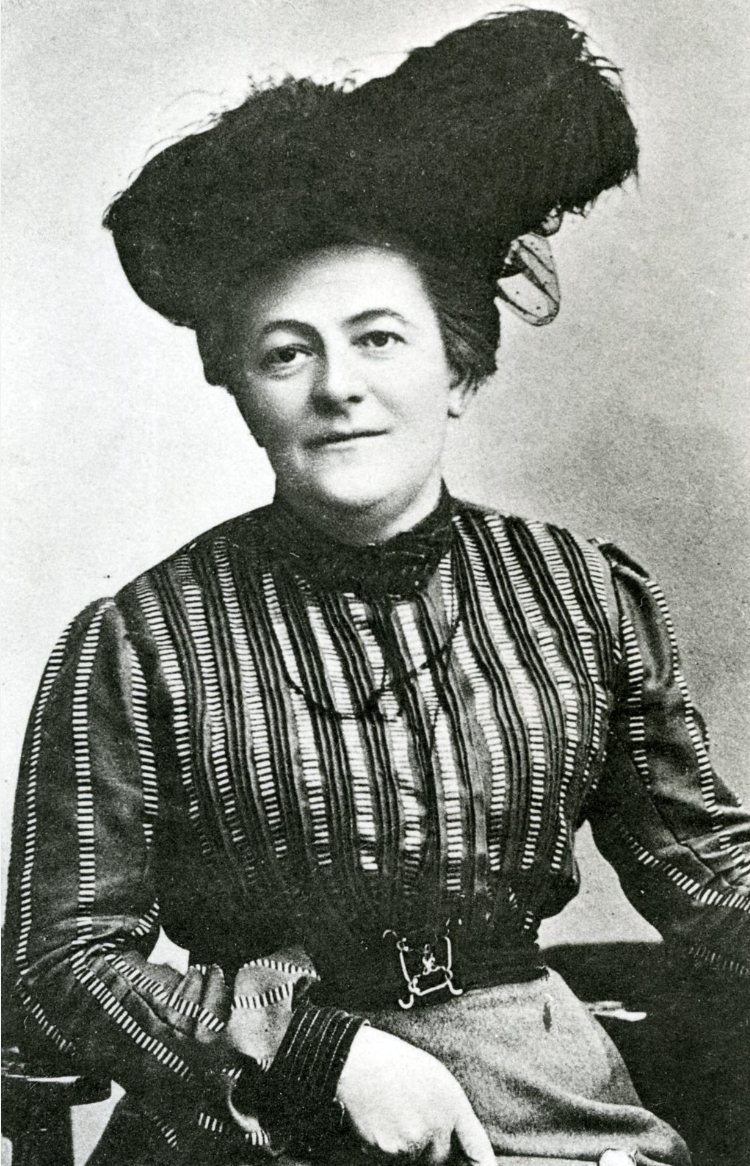INTERNATIONAL WOMEN'S RIGHTS DAY , MARCH 8
What if a more feminine world weren't a utopia, but a necessity? By rebalancing the values of cooperation, intuition, and empathy with those of action and rationality, could we build a more harmonious society aligned with human and environmental needs?
Written by TINA - March 2025
Collapsible content
Reading time
About 10 minutes
WHAT YOU ARE ABOUT TO DISCOVER
- The origin of March 8 , a date born from women's struggles for equality and recognition of women's rights throughout the world.
- The notion of the sacred feminine , a universal energy that crosses cultures and spiritual traditions.
- The role of yoga in awakening the sacred feminine , by offering a space for reconciliation and inner balance.
- The practices and postures that awaken this energy , inspired by natural cycles and the symbolism of the body.
- March 8, a day of mobilization , where the fight for women's fundamental rights remains at the heart of the demands.
- A hymn to power and resilience , celebrating the adaptive and transformative power of women throughout history.
- A more feminine world, a necessity?, reflection on the balance between the feminine and the masculine for a more harmonious future.
- "Let's take a look"!

THE ORIGIN OF MARCH 8: A DAY BORN FROM WOMEN'S STRUGGLES
International Women's Day, celebrated annually on March 8, has its roots in the labor and feminist movements of the early 20th century . Its history is marked by women's demands for better working conditions, equal rights, and the right to vote.
The official origins of this day date back to 1910, when a German feminist activist, Clara Zetkin , proposed the idea of a day dedicated to women's struggles at the International Conference of Socialist Women in Copenhagen. Her goal: to establish an annual mobilization to demand equal pay, the right to work and training, as well as women's participation in political life.
The first March 8 was celebrated in 1911 in several countries, including Germany, Austria, Denmark, and Switzerland, with demonstrations bringing together thousands of women. But it was in 1977 that the UN officially recognized this date as International Women's Day, encouraging nations to recognize and institutionalize it.
This day is much more than a celebration: it remains a reminder of persistent inequalities and a call to action. Around the world, rallies, conferences, and mobilizations are taking place to defend women's rights and promote equality.
Today, March 8th is not only about social and political demands, but also about reclaiming well-being and inner power. It is in this dynamic that the sacred feminine finds its full meaning, offering women a space for anchoring and a deep reconnection with their essence.

THE SACRED FEMININE: A UNIVERSAL AND TIMELESS ENERGY
The sacred feminine is an ancient concept that spans cultures and spiritual traditions around the world. It is not simply a gender issue, but a universal energy, complementary to the sacred masculine. Present in every human being, this energy symbolizes creativity, intuition, fluidity, receptivity, and connection to natural cycles.
In ancient traditions, the sacred feminine was venerated through figures of Mother Earth, goddesses, and female archetypes representing fertility, wisdom, and protection. However, over time and the evolution of patriarchal societies, this essence has often been relegated to the shadows, leaving room for a disconnection from women's bodies, intuition, and inner power.
Today, the sacred feminine is returning to the heart of spiritual and wellness practices, offering a path to reconciliation with oneself, a balance between strength and gentleness, and a deep alignment with one's true essence. It invites us to honor our bodies as temples, listen to our emotions without judgment, and open ourselves to a more intuitive wisdom, often forgotten in the hustle and bustle of everyday life.
Yoga, through its philosophy and practice, is a powerful tool for awakening and harmonizing this energy. By cultivating awareness of breath, movement, and internal rhythms, it allows a reconnection to this deep feminine force, both gentle and powerful.

21st Century Yoga: A Tool for Awakening the Sacred Feminine
In a world where the hectic pace and societal demands often lead to a disconnection between the body and emotions, 21st-century yoga plays a vital role in awakening the sacred feminine. Through its postures, breathwork, and philosophy, it offers a space for reconciliation with oneself, where women (and men) can explore, release, and balance this profound energy.
A more intuitive and introspective yoga
Unlike rigid or performance-oriented approaches, many modern yoga styles are moving toward more fluid and introspective practices that allow practitioners to reconnect with their intuition and feelings. Yin yoga, for example, by slowing down the pace and encouraging listening to the body, allows practitioners to explore buried emotions and find inner harmony.
Postures that awaken feminine energy
Certain asanas are particularly powerful for activating the sacred feminine .
- Heart-opening poses (Ustrasana, Camel Pose, or Anahatasana, Melting Heart Pose) promote confidence, emotional openness, and self-acceptance.
- Grounding and pelvic fluidity poses (Malasana, the garland pose, or Supta Baddha Konasana, the reclining butterfly pose) stimulate creative energy and help reconnect with one's roots.
- Lunar practices, such as Chandra Namaskar (the moon salutation), invite us to honor natural cycles and cultivate a balance between action and receptivity.
A return to natural rhythms and cyclical energy
In line with ancient traditions, contemporary yoga increasingly incorporates the notion of feminine cycles, encouraging women to adapt their practice according to the phases of their menstrual cycle, the seasons, or lunar energies. Hormonal Yoga, developed by Dinah Rodrigues, is a concrete example of a practice aimed at balancing the female hormonal system, promoting physical and emotional well-being.
Pranayama and meditation to cultivate the sacred feminine
Beyond postures, breathing and meditation practices are essential to awaken this energy .
- Lunar breathing (Chandra Bhedana) helps to calm the mind and soothe the often dominant yang energy.
- Meditation on the sacral chakra (Svadhisthana) allows you to reconnect with your creative energy and inner sensuality.
- Sacred mantras and chants, such as those dedicated to Hindu goddesses (Shakti, Durga, Lakshmi), help activate and nourish this inner strength.
A quest for balance between the inner feminine and masculine
21st-century yoga aims not only to glorify the sacred feminine, but to harmonize the two polarities present in each of us: the feminine (intuitive, fluid, receptive) and the masculine (structuring, active, logical). This holistic approach allows us to find an inner balance, where action is combined with intuition, strength with gentleness, and discipline with freedom.
In a world that often values productivity and rationality, modern yoga reminds us that returning to the essential also involves listening, gentleness and the reappropriation of inner power , fundamental pillars of the sacred feminine.

MARCH 8, A DAY OF MOBILIZATION ABOVE ALL
International Women's Day on March 8th is not primarily about inner power or self-care, but rather about the fight for equal rights, justice, and the empowerment of women around the world. Its essence lies in recognizing persistent inequalities, denouncing gender-based violence, demanding fundamental rights (education, financial autonomy, access to healthcare, political representation, etc.), and celebrating the advances achieved through feminist movements.
A Day of Mobilization Above All
Historically, March 8th has been a day of collective action rather than an individual celebration. It is marked by demonstrations, conferences, and initiatives aimed at raising public awareness of persistent inequalities and promoting a more equitable world. The focus is on:
- Equal pay and professional opportunities
- The right to security and justice in the face of gender-based violence
- Women's Education and Economic Empowerment
- Access to health and reproductive rights
- Visibility and recognition of women's contributions in all fields
Inner Power and Self-Care: A Reappropriation of Self
Although self-care and inner power are not the central pillars of this day, they can be seen as tools of resistance and emancipation. In a world where women are often overwhelmed by multiple roles (family, professional, societal), taking time for oneself and honoring one's body and mind becomes an act of activism.
The sacred feminine, in connection with yoga, is therefore integrated into this perspective: that of giving women a space to reconnect with their inner strength , their intuition and their well-being. If March 8 highlights social and political demands, it also recalls the importance of emancipating oneself on all levels, including personal, spiritual and emotional.
A Day of Commitment, but Also of Celebration
Thus, this date is as much a reminder of past and present struggles as it is a hymn to the power and resilience of women. Celebrating the sacred feminine through yoga on March 8 can be a way to honor the legacy of these struggles while cultivating personal grounding. It is in this balance between collective action and individual affirmation that the true significance of this day lies.

A HYMN TO POWER: WHAT IT MEANS
March 8th is not only a day of struggle and demands, it is also a celebration of the strength, courage, and resilience of women throughout history and around the world. Behind every fight for equality, every hard-won right, there are women who have demonstrated unwavering determination, adaptability, and immense transformative power.
Female Power: A Driver of Change
Women's power is not limited to physical strength or professional success. It is a plural force , which manifests itself in:
- The courage to break norms and make your voice heard, even in societies where women are silenced.
- The protective instinct and solidarity, which unite entire generations in the transmission of knowledge, values and culture.
- Creativity and innovation, which enable women to overcome obstacles and propose new perspectives, whether in science, art, spirituality or political engagement.
Throughout history, this power has taken many forms: suffragettes who fought for the right to vote, workers who demanded better conditions, activists who denounced gender-based violence, and spiritual leaders who passed on ancestral wisdom.

A HYMN TO WOMEN'S RESILIENCE: WHAT IT MEANS
Resilience: A capacity to be reborn and move forward
Female resilience is the ability to rise again after challenges , to transform pain into strength, and to rebuild from the ashes of injustice. It is the strength of women who, despite discrimination, violence, or oppression, continue to move forward, create, build, and inspire.
It is observed in:
- Women who reinvent themselves after personal or societal challenges, like those who have survived conflicts, disasters or violence and who, despite everything, rebuild their lives.
- Sisterhood movements that enable women to support each other , help each other, and create spaces for listening and healing.
- Adaptability and transmission, which mean that, despite the challenges, women continue to shape societies, to educate, to transmit values of humanity and resilience .
How does yoga honor this power and resilience?
Yoga, as a physical, mental, and spiritual discipline, offers tools to nurture this inner strength and capacity for transformation. It teaches that true power lies not in domination, but in grounding and self-knowledge.
- Grounding and opening postures (like Virabhadrasana, the warrior pose, or Ustrasana, the camel pose) remind us that strength lies as much in stability as in accepted vulnerability.
- Meditation and pranayama help cultivate mental resilience in the face of challenges, learn to breathe through storms, and maintain a space of inner clarity.
- Listening to the body and emotions allows women to no longer fight against themselves, but to transform their energy into a conscious and balanced power.
A celebration of women in all their dimensions
March 8th is therefore a day to honor those who have paved the way, but also those who, on a daily basis, embody this strength and resilience, whether they are mothers, activists, entrepreneurs, artists, teachers, athletes, healers or simply anonymous people who change the world in their own way.
By celebrating this date through yoga and reconnecting with the sacred feminine, it is not only about claiming rights, but also about honoring this universal force that crosses generations and cultures , and which continues, despite obstacles, to illuminate the world.

WOULD A MORE FEMININE WORLD BE MORE RELEVANT?
A more feminine world does not mean a world ruled by women, but a world where the values of intuition, cooperation, empathy, and respect for natural cycles are more fully integrated into our societal models. Today, the dominance of patriarchal values—competition, hyperproductivity, excessive rationality—has led to a visible imbalance in the exploitation of resources, mental overload, and rigid power structures.
A balance between the feminine and the masculine would allow us to:
- Put listening and emotional intelligence back at the heart of political and economic decisions.
- Favor cooperation over competition, promoting sustainable collective solutions.
- Value intuition and creativity as much as logic and strategy.
Yoga teaches this balance by integrating yin and yang, solar and lunar energy, and reminding us that true power lies in the harmony of opposing forces . Practices like Hatha Yoga, meditation, and pranayama reconnect us to this essential duality.
Far from being a utopia, the integration of feminine qualities is a necessity to build a world more aligned with human and environmental needs, where kindness and intuition are no longer perceived as weaknesses, but as indispensable assets.
Thank you for this reflection on the balance of the world! May the union of the feminine and the masculine guide us towards greater harmony, wisdom, and transformation.
HEALTHY MIND, HEALTHY LIFE
TINA's Bio
-

TINA
1994, Reunion Island, Mauritius, a Life carried by the Indian Ocean and Yoga
Since childhood, this intrepid traveler has traveled the globe, leaving her footprints on beaches around the world.Passionate about surfing, scuba diving and sailing, she has made the oceans her playground and source of inspiration.
The freedom of the waves, the serenity of the ocean depths and the wind in his sails have punctuated his journey, always guided by a quest for connection with nature.
It was through her explorations that yoga became more than a practice for her – it was a way of life.
Between early morning surf sessions and meditative sunsets, she found in yoga a perfect balance of strength, flow and self-awareness.
Today, she combines her passion for water sports with teaching yoga and is part of the Yogaterrae team, here in France, in the South West and often remotely :)
This adventurer is a true source of inspiration for anyone who aspires to live in harmony with their body and nature.
Through her stories of incredible experiences, she invites everyone to open up to a world where every wave, every breath and every posture is a celebration of life.



